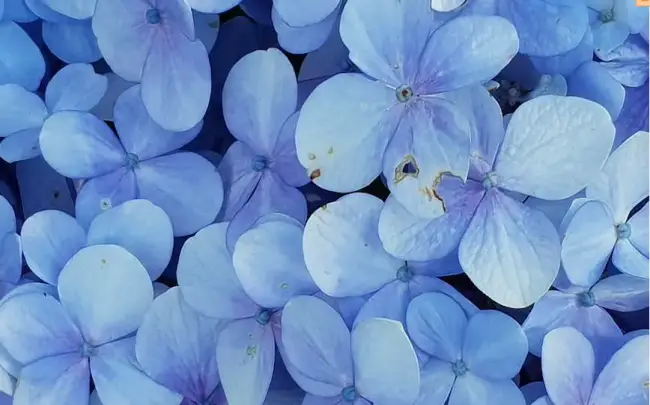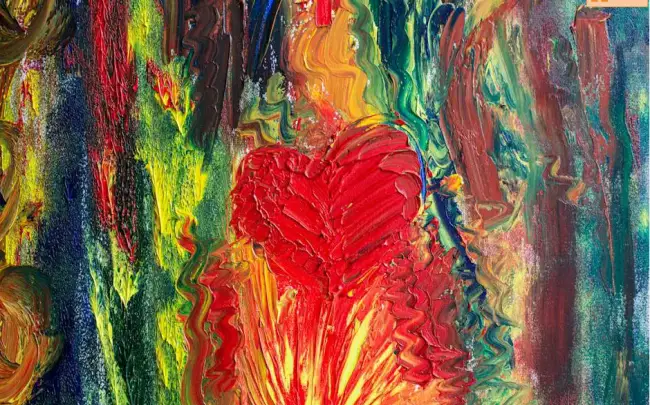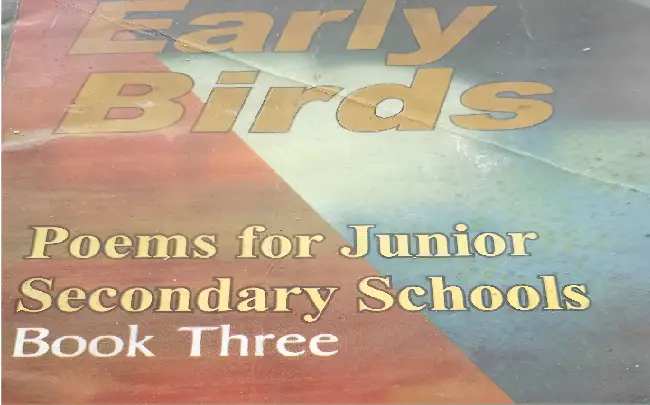Acrostic poetry holds a special place in poetry combining the intricacy of words with the beauty of structure to create a mosaic of profound meaning and vivid imagery. This intriguing form of poetry – where the first, middle or last letters of each line come together to spell out a word, a phrase or even an entire sentence, opens up a world where creativity knows no bounds. When you juxtapose it with the colourful canvas of spring, brimming with symbols and emotions, it becomes a journey of exploration through the blossoming fields of literature.
This article will take you through an understanding of acrostic poems, their inception in spring’s inspiration and metaphoric themes, guide in crafting them, and provide examples to demonstrate what has been learned.

Understanding Acrostic Poems
As the breadth and depth of artistic creativity unravel themselves, many refreshing and exciting threads often spring forth. Considerably, one form stands out quite uniquely – Acrostic Poetry. This remarkable art form is an enchanting blend of visual and literary art, crammed with imagination and an appreciable versatility that simply invigorates the human senses.
However, you may be wondering , is acrostic poetry?
An acrostic poem, in essence, is a cryptic labyrinth of words, wherein the first or last letter of each line, when read vertically, spells out a name, a message or a word. These poems provide a harmonious marriage between structure and free form, demonstrating that artistic boundaries can in fact shape and spur rather than limit creativity.
A beauty of acrostic poems lies in their dual functionality. They serve not only as a vehicle for delivering subtle messages – those that might otherwise go undelivered – but also as a playground for poets, inviting diverse creative strategies, from the intricate to the straightforward.
Arguably, the unique charm of acrostic poetry can also sprout from the veil of mystery it drapes around its core message, a mystery that oftentimes inspires readers to delve beyond the surface-level meaning. The acrostic often ensnares the curiosity, prompting an adventurous quest to uncover a deeper, hidden signification.
This multi-tiered nature of acrostics reflects the complexity and multidimensionality of art itself.
Moreover, the construction of an acrostic poem is an exhilarating creative process. The poet starts with a straightjacket of structure where every step appears predetermined. Yet, within this confinement lies a universe of poetic freedom. Choosing the secret word or message is akin to picking a seed.
This seed then grows and blooms into a beautiful expression of words and meanings. Each new line prompts the artist to pivot and navigate the maze, every single word a stroke on a canvas. Acrostics, in essence, reflect the transformation of rigid structure into a gorgeous tapestry of profound sentiment and ingenious wordplay.
There is a rhythm and a dance in creating acrostics. What seems restrictive actually leads to unexpected and liberating paths of creativity. As the words unfold in an acrostic, infinite artistic possibilities reveal themselves.
Isn’t it extraordinary how constraints can inspire rather than impede creativity?
Acrostic poems possess a rare charisma that not only intrigues the intellect but also dances with emotions. The crafted journey from a preordained structure to a cascade of phrases that can stir the soul is nothing short of hypnotically mesmerising.
Relationship Between Spring Inspiration and Metaphoric Themes

Spring has long been admired and cherished as a time of renewal, rebirth, and vibrant life. Everything around us appears to awaken, ready to bloom and burst forth in colourful vibrancy. This time of rebirth serves as an extraordinary metaphor and potent catalyst for acrostic poetry, inviting poets to create art that expresses these feelings of renewal and vibrancy.
Why should spring be significant to acrostic poetry?
Consider that life spring breathes into nature. Seeds which had been dormant during winter, now awaken, stretching out to bloom and flourish. This parallel is mirrored in the creation of an acrostic poem. Words lie in wait, dormant yet alive with potential, before they spring forth into lines of a poem. Drawn together, these lines create a torrent of colour and vibrancy in the mind, much like the birth of flowers in a previously barren land.
In an acrostic poem, the initial letters in each line form a word vertically when read top-down. Spring, therefore, can offer a poetic scaffold to stem from or a latent word on the vertical axis. The structure of acrostic poetry instigates an element of surprise, similar to the first exquisite blooms of spring that spontaneously peek through frost-kissed ground. Each flower, unique yet united, creates an exquisite tableau, not unlike the individual letters that unite to compose a verse, a sentiment, or an emotion.
Spring is a cornucopia of vibrant sensations and constant change. The kaleidoscopic colours of the flowers are mirrored by the changing moods of the season. From a clear azure sky, kissed by the sunshine to intoxicatingly fragrant blossoms after a light spring shower, this ever-changing panorama infuses diversity and fluidity into the acrostic poem.
Each line in an acrostic poem can reflect these ephemeral moments of spring – the effervescence of a cherry blossom tree at the crack of dawn, the medley of birdsongs at twilight, or the sense of peace as the setting sun paints the sky in hues of purple and gold. The celebration of the renewal that spring brings to nature is an artist’s delight. Its beauty and charm lend themselves to the ebb and flow of acrostic poetry, enhancing its vitality.
In essence, spring as a metaphor and inspiration serves to enrich acrostic poetry holistically. As the spring winds blow away the cobwebs of winter, inviting new life, acrostic poems give life to words, nurturing them into lines of poetic expression. This symbiosis between nature and verse further underscores the unity inherent in every form of artistic creation.
Steps In Crafting A Spring Acrostic Poem
Let’s immerse ourself in the allure of acrostic poetry, infused with adoring affection towards the newness of spring’s offerings. It is time to delve deeper into creating a vivid and resonating work that is inspired by the season of rejuvenation, rebirth, and vivacious vibrancy.
Select The Right Words
Kicking off, the very first step is to arm oneself with the right words. Spring encapsulates a plethora of emotions, sensations, visual imagery and moods, and it is these very nuggets one must scout for.
Blossoms, buds, birdsong, showers, rainbows, freshness, growth – these are the words that might start to populate the list.
Scribble them down without inhibition. This word-list works as a quiver of arrows, each ready to launch into potential verses.
Choose A Base Phrase
After having a keyword list in possession, the next step channels the titillating mystery element of acrostic poetry: the selection of a base phrase. This could be a single word or a phrase, directly associating with spring or symbolising its essence. Depending on the intention of the poem, this base can be versatile. ‘Spring Renewal’, ‘April Showers’, ‘Blossom Bliss‘ can each embody a different nuances of the season.
Expose The Theme/Central Idea
Next, comes an abstract step – visualising a grandeur narrative. A storyline, a theme or a central idea gives the acrostic structure a more unswerving purpose.
Will your poem trace the journey of a seed into a blossom or express the soft emotions budding within you as spring unfurls its magic? The decision is entirely a product of the beauty the poet sees in spring.
Employ The Use Of Rhythm
Engaging an impactful acrostic poem isn’t just about composing a clever formation of letters in sequence. The core magic lies in a rhapsody of refined rhythm and fitting rhymes, much like the pleasant harmony of spring’s cascade of colours and sounds. A master stroke that can elevate the acrostic structure into a work of moving poetry.
Make Use Of Concise Words
Employing vivid, yet concise language is an effective strategy indeed. Simple words, causing ripples of emotions and etching vivid imagery, often hold the key to the readers heart. The aim is to draw the reader into the field of tulips, feel the resounding birdsongs and introduce the sweet scent of revival that spring brings about.
Remember, spring is a season of transformation, from the hardness of winter to the velvety touch of flowers. The rhythm and flow of your poem should reflect this gentle, harmonious and dynamic transition. Play with the pacing. Speed up the showers, slow down on the rainbows, let the poems rhythm change with the mood and the scene you paint.
Lastly, a spring-oriented acrostic poem thrives when it resonates with its readers. Be it an innocent ode to the beauty of blooms or sprinkling metaphors of resilience and rebirth, let spring inspire your ink. Every stroke is a chance to unfold a petal of spring for your reader to behold, and while you tame your verse within the constraints, remember, the power of the season is yours to bestow.
Acrostic poetry and spring share an intrinsic naturalness. They grow within boundaries, they blossom with surprises and they mirror life’s sweet, vibrant and evanescent essence. So, dive into this comforting complexity, find your rhythm amidst the dance of the letters and let the magic of spring whistle through your verses.
Examples Of Spring Acrostic Poems
Spring, the season that unveils the natural artist’s dream, reverberates in several acrostic poems, imbuing them with a refreshing vibrancy and spirit that stirs the hearts of the readers. Each verse, carefully planted, blossoms like an unexpected primrose uncloaking amidst the vernal verdure, echoing the arrival of spring.
Take the poem ‘Spring Arrives,’ where the uncanny harmony between the gentle rhythm, evocative words, and tender theme captures the honest beauty of the season and the sphere of acrostic poetry.
In another remarkable piece, ‘Winds of Spring,’ the poet skillfully navigates the constraints of acrostic writing to offer a gusty, vibrant portrayal of spring’s whimsical nature. The dance of spring and language becomes a flourish in the reader’s mind, creating a timeless resonance that is, indeed, the hallmark of acrostic poetry.
Similarly, the poem ‘Blossoms of Spring‘ enlightens through the dew-soaked imagery of the spring’s miracle life. It surpassingly exemplifies the power of acrostic poetry – to take a single word, such as ‘spring’, and unfold it into a tale steeped in beauty and profundity.
Poetry doesn’t always need a grand narrative to be compelling. Consider ‘Spring Muse,’ an acrostic poem that rejoices in the simple, joyous moments spring brings. The poem, though superficially simpler, peels back layers of subtleties within its fine brush strokes, showing how acrostic artistry can encompass both humble and grand spectacles.
A clever use of rhythm and rhyme illuminates ‘Spring’s Transition,’ an acrostic poem that intertwines the changing vistas of spring with a lyrical dance. The fluency of the verse encapsulates the effortless blend and beautiful chaos of spring, demonstrating the dynamic expression that can be imbued within the structure of acrostic poetry.
To kindle a rookie poet’s aspirations and an avid reader’s delight, ‘Awakening of Spring’ emanates the true potential of spring-inspired acrostic poetry. With a rich palette of lyrical language and intricate observations, the poem captures spring’s awakening – a stirring homage to the fusion of nature and artistry.
These exemplary pieces not only manifest the grandeur of spring acrostic poetry but also serve as glorious guides for aspiring poets to pull words from their creative caves and forge verses drawn from the heart of the spring. They remind us that even within the fixed framework of acrostic poetry, each choosing to celebrate spring in a way unparalleled to the last, there remains a realm of endless possibilities, each inviting you to create your own vibrant spring portrait.
Conclusion
On this stimulating pathway through the realm of acrostic poetry and spring’s budding inspiration, you have seen the charming harmony they spin together. The soft hues of spring, coupled with the expressive power of acrostic poetry, present an opportunity for writers to tread creative grounds untrodden.
As you explore the limitless possibilities of this art form, let the symbology of spring inspire the metaphoric imagery in your own work. Remember the examples and the techniques employed therein, and let your own verses flow, painting a poetic spring in your reader’s mind.
Acrostic poetry is not just about writing, but about seeking, discovering, and ultimately, expressing — it’s your turn to embrace this beauty and let your words embellish the canvas of literature.




